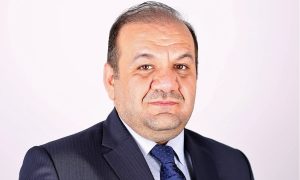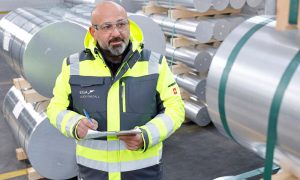Case Study: Reliable private wireless network for smart grid applications
How DTE Energy used a wireless network deployed by ABB to secure its smart grid infrastructure and applications

In 2010, DTE Energy, the energy provider to 2.2 million customers in southeastern Michigan, received a US Department of Energy Smart Grid Investment Grant to help fund 50% of its $168m SmartCurrents programme. The programme aimed to modernise DTE’s electric grid, improve distribution system reliability and efficiency, and empower electric customers with more information about their power usage.
The utility selected solutions from ABB and Itron to advance the initiative, and by 2012 DTE had installed 725,000 of Itron’s smart meters and a complementary network communications architecture from ABB’s wireless unit, covering approximately one third of DTE’s customers – resulting in almost $1m in savings from significant efficiencies, including almost 80,000 fewer truck deployments and a smart meter daily read of 99%. Simple manual meter read errors were now eliminated with the automated remote daily read feature.
Project Expansion
Due to the programme’s initial success, DTE continued smart grid deployment over the next four years, expanding the rollout to include wireless connectivity to more than 70 electric distribution substations and the largest solar power generation station in Michigan.
The expanded smart meter capabilities enable DTE to provide, among other things, automated meter connect/disconnect of 3,000-5,000 meters per day. Additionally, DTE implemented advanced distribution applications and the ABB Ability Network Manager Supervisory Control and Data Acquisition (SCADA) platform, with the goals of reducing outage time and better managing distribution power flow and peak power.
The final phase of the distribution automation efforts across DTE’s coverage area – 3.2m meters in 7,600 square miles – was completed at the end of 2016. Notably, the DTE deployment of ABB’s wireless technology is the largest wireless mesh network in the world.
Putting the Network to the Test
In March 2017, the effectiveness of the distribution automation (DA) efforts was tested when a storm with 70mph winds left nearly 800,000 customers without power – more outages than any other time in DTE’s history. By design, the self-healing wireless mesh technology embedded in the communication network was able to work around downed lines and poles to continually read meters and provide additional data essential in pinpointing outages, making field deployment far more efficient than in previous years.
To determine restoration progress and how many customers remained without power, the electric advanced metering infrastructure (AMI) meters were automatically queried by the system four times a day, providing frequent customer power status updates. These AMI data points were used to analyse, update and refine outage management system (OMS) data to automatically update the OMS-fed outage maps, prioritise restoration activities and align resources. This reduced average restoration time by an estimated one to two days.
In fact, power was restored to 90% of customers within four days of the storm, exceeding DTE’s response goals and earning the utility neutral to positive comments in mass media and on social media. Moreover, after the windstorm, a cold front moved into the service area and the utility was able to use AMI technology to determine whether self-identified critical medical care customers and those on the senior rate had power. If not, DTE employees performed a ‘well visit’ check and provided information about nearby warming centres. Hundreds of these visits were performed during the course of the storm.
A Private Network to Enable the Future
Also in 2017, DTE started the process of moving away from 3G cellular and toward a wholly owned private network in support of a smarter grid strategy for the next five years, anticipating the installation of thousands of smart grid devices.
Over the course of the SmartCurrents programme rollout, the benefits to DTE and its customers have been evident every step of the way. It’s the start of an aggressive investment plan that will develop a modern grid capable of meeting the needs of the 21st-century economy and provide a template of success for the power industry.
Overcoming Challenges
While the newly installed smart grid technologies have resulted in many benefits, deploying the new devices and systems has not been without challenges. Early in the programme, the team was challenged by dense urban geography with limited access to poles, due primarily to underground rather than overhead electric distribution construction. DTE engineers were able to initiate design innovations using available facilities or partnered facilities to help remedy the issues.
Also, DTE’s service territory has a dense tree canopy that negatively impacted RF signal propagation. The combination of using the ABB products’ multiple frequency bands, alternating network device installation periodically on different sides of the street, and using traffic intersections for device placement created reliable successful communication in these areas.
A further early design challenge was the placement of the network device in the exact location as engineered, rather than possibly a few poles away in the general area. Installation triage crews used washable paint to pre-mark the poles chosen by engineering, which reduced line crew installation time and improved the accuracy of field placement.
DTE and ABB worked together on product enhancements, such as the addition of GPS to devices to increase the accuracy of device placement, as well as signal theft or other issues if the devices begin to travel within an area without a corresponding issued work package.
Like most other utilities, DTE initially underestimated the volume of data generated by the new technologies and its impact on information technology (IT) needs. By 2012, DTE had partially addressed the challenge by adding to DTE’s IT system capacity. In addition, DTE worked with its vendors to improve the speed and performance of their products, such as through a new bus architecture.
How to achieve proper system integration was another IT-related challenge that entailed trade-offs for the utility. DTE decided against comprehensive system integration, keeping the various systems separate in an effort to be able to isolate changes to one part of the system without affecting other affiliated applications.
With extensive planning and phased deployment, DTE has been able to mitigate more critical challenges. While there are always lessons to be learned, DTE’s measured approach has offered peace of mind via prevention.
























